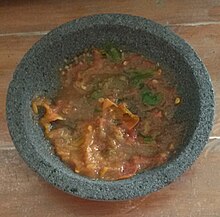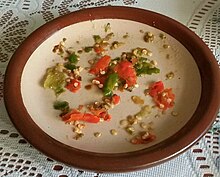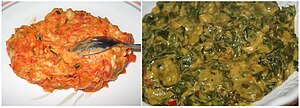
Daun mangga mungkin saja saja saja disangka beberapa umum saja serta tidak punyai faedah apa pun untuk kesehatan, kecuali buahnya yang dikonsumsi.
Meskipun sebenarnya daun mangga tidak seperti yang disangka beberapa orang. Mangga berguna banyak untuk kesehatan, baik buah mangga atau daun mangga. Daun mangga begitu gampang didapat, mengingat pohon mangga tumbuh dimanamana. Hampir tidak ada tempat tinggal yg tak menanam mangga.
Jadi, paling penting terasa untuk kita kenali sedikit mengenai manfaat daun mangga untuk kesehatan. Siapa tahu masalah kesehatan kita dapat dikerjakan dengan daun mangga yang ada didepan tempat tinggal kita. OK, selekasnya saja kita simak sebagian manfaat dari daun mangga.
Manfaat Daun Mangga untuk Kesehatan
1. Diabetes angiopathy
Diabetes angiopathy yaitu tipe penyakit yang mematikan serta menakutkan. Lantaran penyakit itu jalan dari rusaknya pembuluh darah di sekitaran pangkreas. Jika itu tidak dihiraukan jadi bisa
menyebabkan fatal. Untuk menentramkan penyakit itu anda dapat meminumkan teh dari daun mangga pada pasien.
Langkahnya yakni dengan menumbuk
2. Turunkan desakan darah tinggi

Teh yang terbuat dari daun mangga dapat juga berguna untuk penyembuhan darah tinggi. Langkahnya sama yakni dengan meminum teh dari serbuk daun mangga.
3. Berikanlah kesegaran tubuh serta singkirkan gelisah
Manfaat daun mangga yg tak kerap di ketahui yang lain yakni sebagai obat pembasmi gel! sah. Anda dapat berikan 2 hinga 3 cangkir teh herbal daun mangga ke air mandi anda. Lalu mandi seperti umum serta anda bakal rasakan s3ns4si segar serta nyaman.
4. Obat kes*ubur4n su4mi! steri
Manfaat daun mangga yg tak kerap di ketahui yaitu sebagai obat herbal penyub*ur seu4mi! steri. Haluskan dua siung bawang merah serta daun mangga seadanya. Lalu seduhkan dengan air panas sebagian 1/2 gelas serta minum melalui langkah teratur.
5. Menyembuhkan asam urat
Untuk pasien asam urat dapat juga memakai daun mangga sebagai obat herbal. Seduh daun mangga dengan air panas sampai beralih warnanya. Anda dapat melembutkan daun mangga lebih
dulu supaya air seduhan tambah baik. Jika ada madu, begitu bagus anda berikan madu di air seduhan daun mangga. Minum melalui langkah teratur.
6. Menyembuhkan penyakit batuk serta pilek
Manfaat yang lain dari teh daun mangga yaitu untuk menyembuhkan pilek serta batuk. Langkahnya sama juga lewat langkah diatas.
7. Memudahkan penyakit asma
Untuk mengobati atau memudahkan penyakit asma, ambillah daun mangga serta potongpotong halus, jemur serta seduh berbarengan dengan dua sendok teh dalam secangkir air panas, minum melalui langkah teratur.



 Traditional sambal
Traditional sambal 

















